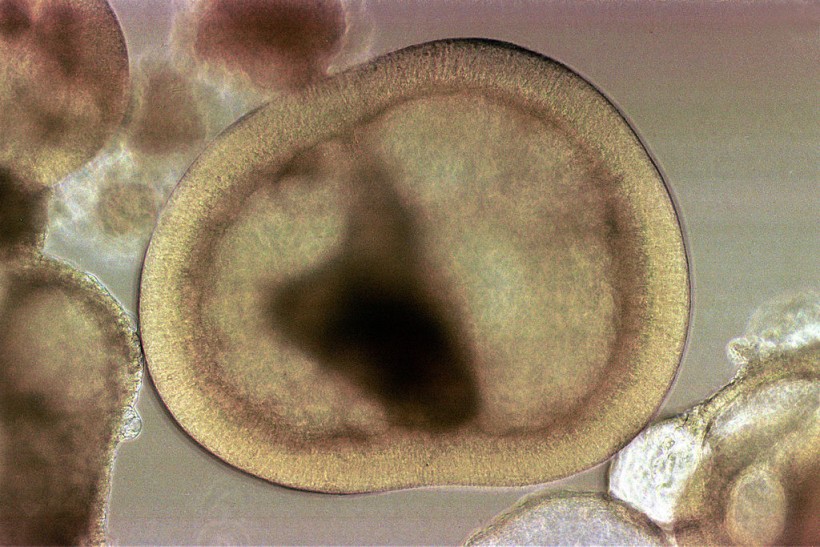New biological study identify how the cell membranes thrive at a cellular level. Based on the research, these membranes can curve and produce an opening that serves as its mouth for nourishment. Experts also observed how these cells could consume any nourishment they could get on other organisms that surround them.
Ohio State University's Department of Physics expert and lead author of the study Comert Kurasl said in a report by EurekAlert that cells have a similar habit of what humans can do during food consumption. If humans can compile and shape the food they eat, cells also 'eat' matters surrounding them for their sustenance and overall health. Many studies from the past recognize the biological concept, but the approach of how the cells do their routines remained unsolved.
How Cells 'Eat' in the Body

394071 01: An embryoidic body, a stem cell which has differentiated in suspension and which has the ability to become any kind of human cell, grows in a solution in a research laboratory September 5, 2001 at Israel's Technion Institute of Technology medical school in Haifa. The Technion, which launched Israel's stem cell research program in 1998, said it might share its four stem cell lines for use in medical research.
Knowing how the cells perform their nourishment phases requires an extensive observation on their own scale. To pull off this analysis, researchers from Ohio State University and other institutes combined their expertise to study cellular activity for the first time.
The study found that each cell has a specialized biological function in its structure that allows them to create a curve-like extension of itself. This extra portion that grew from the cellular bodies grows from its 'basket' state to being a closed cage. In other initial investigations, the structure of these extensions was believed to be a type of flat lattice.
Kural explained that the curvatures observed from the cells are essential to their life cycles. According to the expert, the curbed extensions are somewhat the only way for the cells to let substances in and out of them. Without the pockets from the curves, cells would not adapt to any development and undergo biological transitions. For example, extracellular substances that result from capturing a combination of nourishment around cells transform into fluid-based containers in our body called vesicles.
Vesicles: Mode of Transportation Between Cells
Vesicles serve as the components responsible for taking care of many cells in the human anatomy. The sacs are produced from the modification of cell bodies in a size one-millionth of a red blood cell scale. Although the steps to create and equip cellular bodies are complex, factors that could disrupt them exist. Pathogens, for example, can hijack the process of vesicle development in a cell and eventually infect them.
The production and consummation of vesicles from cells play a key role in many organisms to continue the flourish of life. Managing vesicles could regulate and eliminate bad cholesterol from the blood and relay neural signals across the body. The responsibility of cells over vesicles could even fight off severe conditions by breaking down cells that induce them. Illnesses controlled by the cellular membrane's curve reorganization, include Alzheimer's disease and cancer.
The idea that the cells were flat affected much information regarding the cells and their functions, leaving the entire subject hanging for almost 40 years now. Kural explained that the previous idea had been a topic for numerous debates due to the controversial aspects it presents. But because of the examination they recently processed, Kural's team was able to see the cellular pockets transition for the first time.
Through the help of a super-resolution fluorescence-powered imaging approach, the team observed the unseen activity, allowing them to answer most of the unsolved questions revolving around the cells. The study was published in the journal Developmental Cell, titled "De novo endocytic clathrin coats develop curvature at early stages of their formation."
RELATED ARTICLE: Origin of Life Allegedly Driven By Organisms From Outer Space
Check out more news and information on Biology in Science Times.














